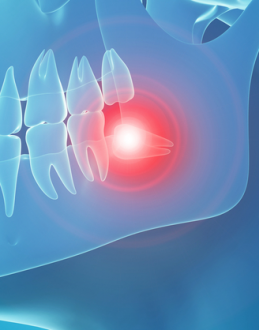Costen was the first to describe the temporomandibular joint condition in 1936. It is defined as “An umbrella term for a variety of clinical issues involving the temporomandibular joint, the masticatory muscles dysfunction, and related tissues, sometimes both”. Costen’s Syndrome is also one of these temporomandibular joint illnesses. It is a disorder that causes pain in the muscles and bones. The pain is induced by tight muscles in the jaw, and it spreads to different parts of the neck and head.
There are various diagnosis names for temporomandibular joint dysfunction (TMD). One of them is Costen’s syndrome. Costen’s syndrome is caused by ear abnormalities such as continuous ear disturbances and vestibular (inner ear) balancing system.
It is possible in Costen’s syndrome to have both main and secondary dysfunctional etiologies, with the latter being more prevalent in the ENT region. From a generalized headache and facial discomfort to more localized or even neuralgic pain, the symptoms of this illness vary widely. This syndrome is treated in a three-step process that comprises behavior therapy, physiotherapeutic techniques, and occlusal therapy.
Costen’s Syndrome Symptoms
Costen’s syndrome is most prevalent in people between the ages of 20 and 40, and it affects women more than males. The following are amongst the most prevalent symptoms of Costen’s syndrome:
- Jaw discomfort.
- Headaches.
- Earaches.
- Neck or shoulder pain is a common complaint.
- Inability to open the mouth widely.
- Jaws that can “lock” in either the open or closed position.
- When expanding or closing the mouth, the jaw joint makes clicking, popping, or grinding sounds.
- A sensation of fatigue in the face.
- Chewing becomes difficult.
- Discomfort in the ears
- Changes in the alignment of the teeth.
- Face swelling.
- Toothache.
- TMJ pain in one or both temporomandibular joints.
Costen’s Syndrome Causes
There are several contributing factors to Costen’s Syndrome’s etiology, including the loss of teeth, improperly fitted prosthetics, wear on the teeth, inadequate restorations, and parafunctional practices (like, finger sucking, nail-biting, and object biting).
In many cases, the source of this Costen’s syndrome is unknown. There is a possibility that jaw or joint trauma causes this disease. This issue is also caused by some other health conditions, therefore it is important to rule out all of these possibilities. There are the following important medical conditions that are considered the causes of Costen’s Syndrome:
- Degenerative joint disease.
- Breakdown of the joint.
- Grinding or clenching teeth habitually.
- Jaw difficulties at birth.
- Problems of growth.
Some factors are linked to this issue, although they are not confirmed to be the sole cause. Costen’s Syndrome is caused by several reasons, including the following:
- Female hormones.
- Improper posture.
- Long-term stress.
- A high degree of flexibility in the joints.
Because of the proximity of TMJ to the ear, it must be placed in its appropriate location in the mandibular fossa. So, if outside or inside force affects this harmonious joint and causes it to move, it results in damaging nearby structures and makes the person feel bad. Costen’s syndrome is not life-threatening, but it causes a lot of pain and strain mostly around the jaw if left untreated. Inflamed joints and even tooth damage are possible side effects of this condition.
Costen’s Syndrome Treatment
There are many different types of treatments available. Temporomandibular joint issues like Costen’s syndrome are frequently successfully treated at home by individuals. Self-care and lifestyle change are sufficient to manage mild to moderate symptoms. Reducing jaw movement is one of the suggested self-care remedies. These self-care therapies are as follows:
- Simply consuming soft meals.
- Keeping the jaw from clenching or tensing.
- On the other side, mild activities like softly expanding the jaw are suggested.
- Massage of the jaw’s afflicted muscles is also beneficial.
- A combination of rest and light exercise is advised. The best exercises to do and other lifestyle modifications that reduce TMJ condition symptoms are also suggested by a medical specialist.
The other treatment option is surgery. It is undertaken only if all other therapeutic options are exhausted and severe pain persists. Even though TMJ surgery is frequently the best choice, it is crucial to consider all of your choices and make a well-informed choice. TMJ surgery is classified into three types:
- Arthrocentesis.
- Arthroscopy.
- Open joint surgery.
The symptoms of TMJ and the severity of the problem determine what kind of surgery is needed. Simple self-care techniques, conservative therapies, injectables, and surgical intervention are all cures. The majority of medical professionals concur that conservative, nonsurgical therapy should be tried first and surgery should only be used as a last resort.
 Health & Care Information
Health & Care Information 


